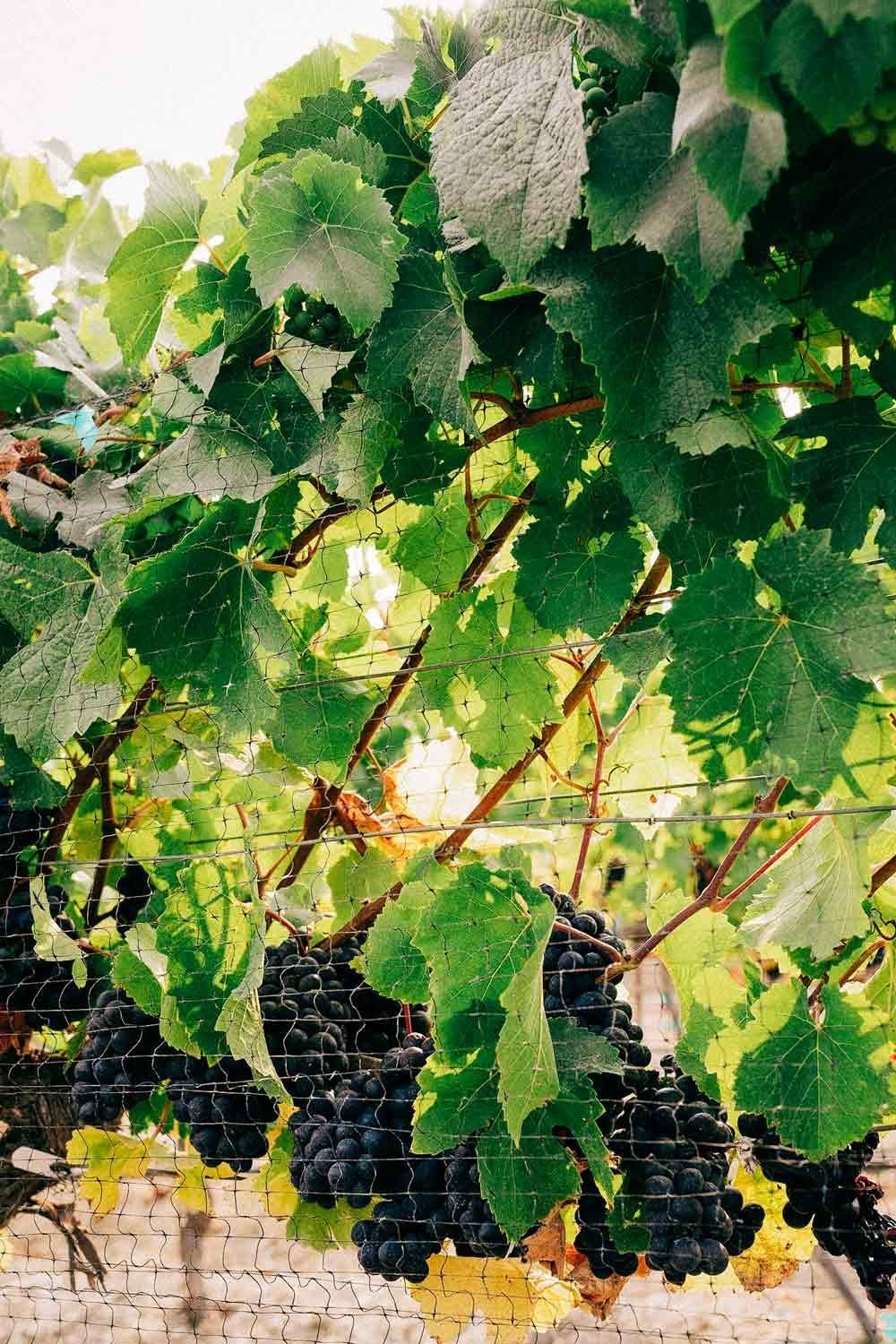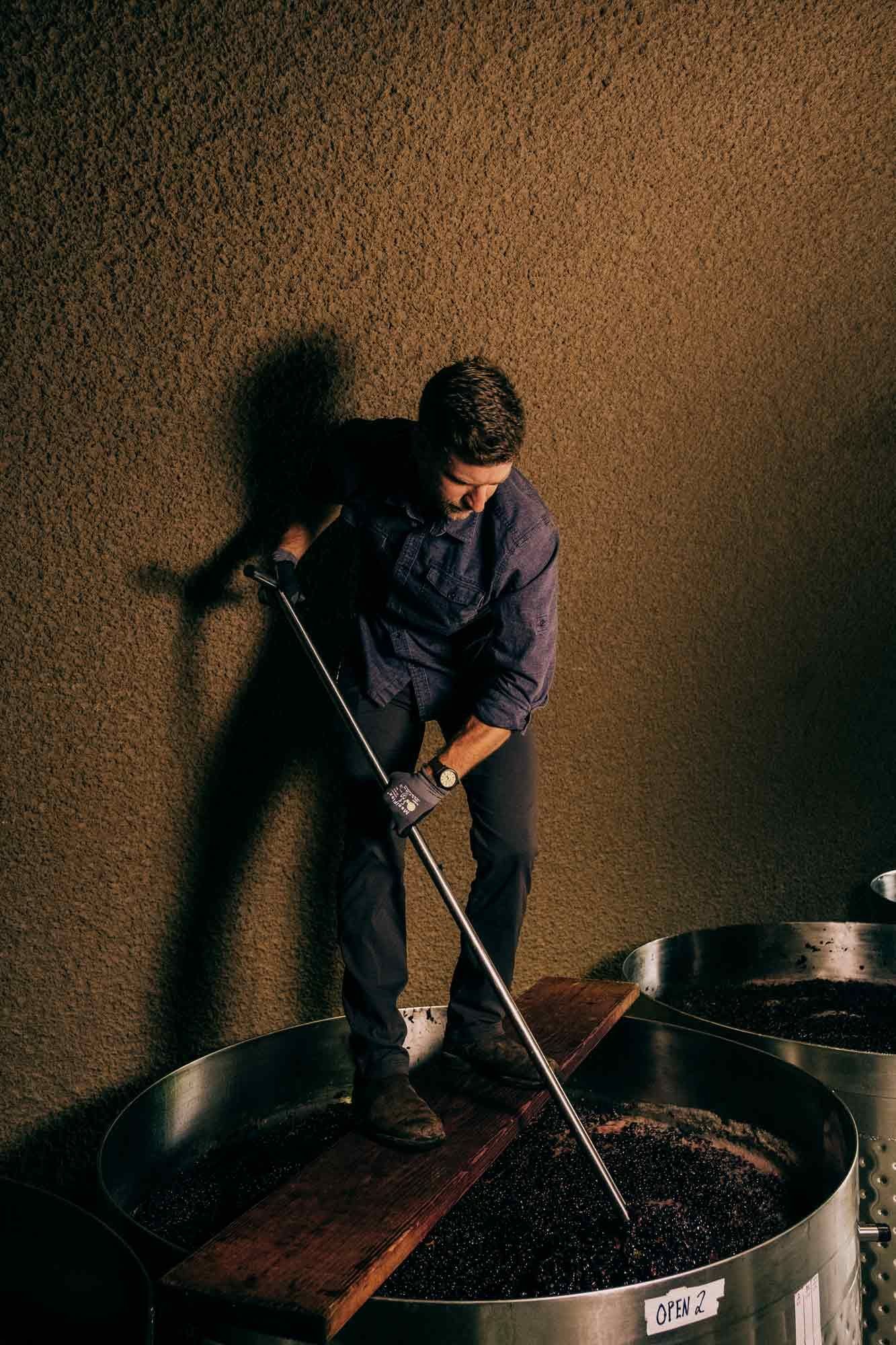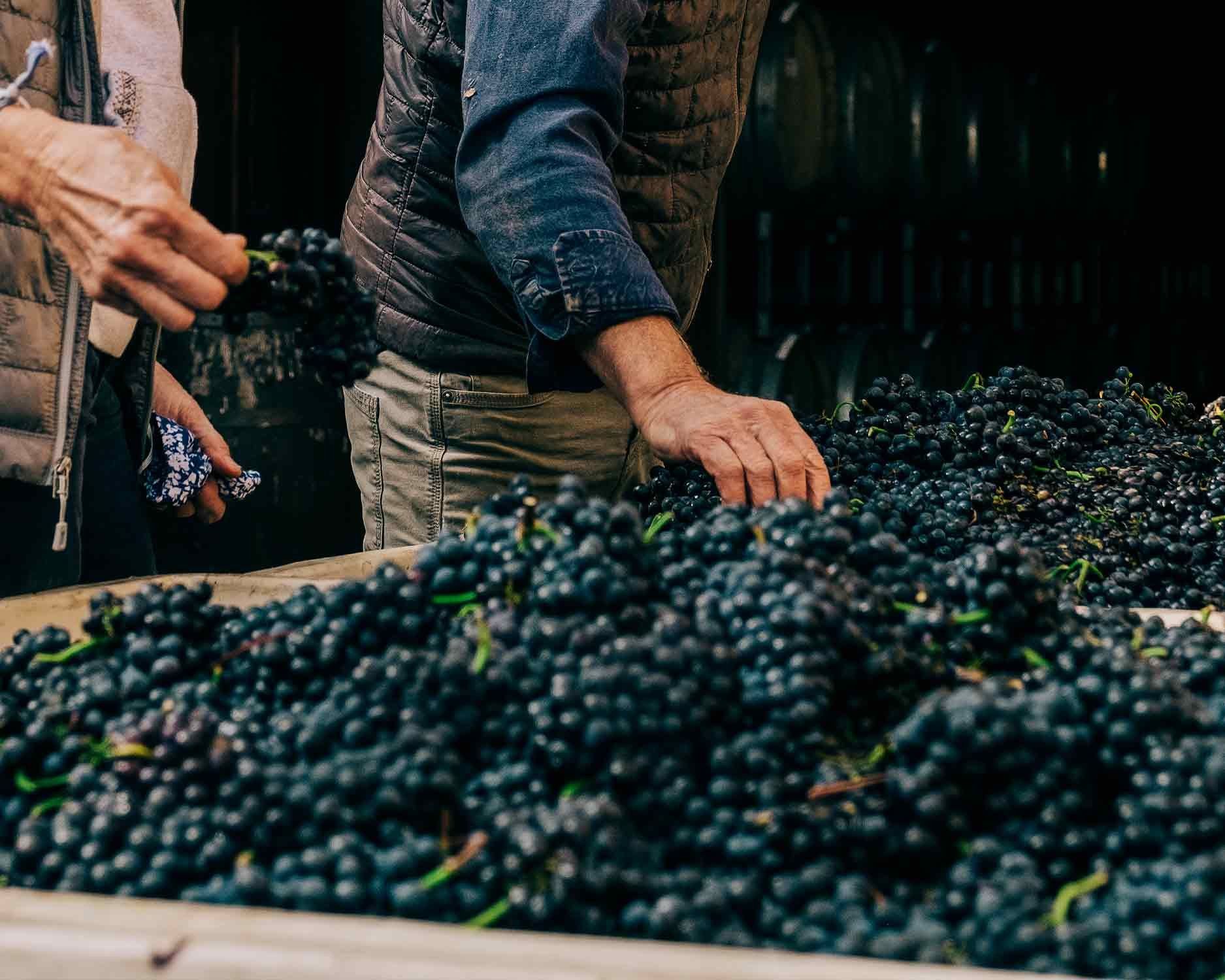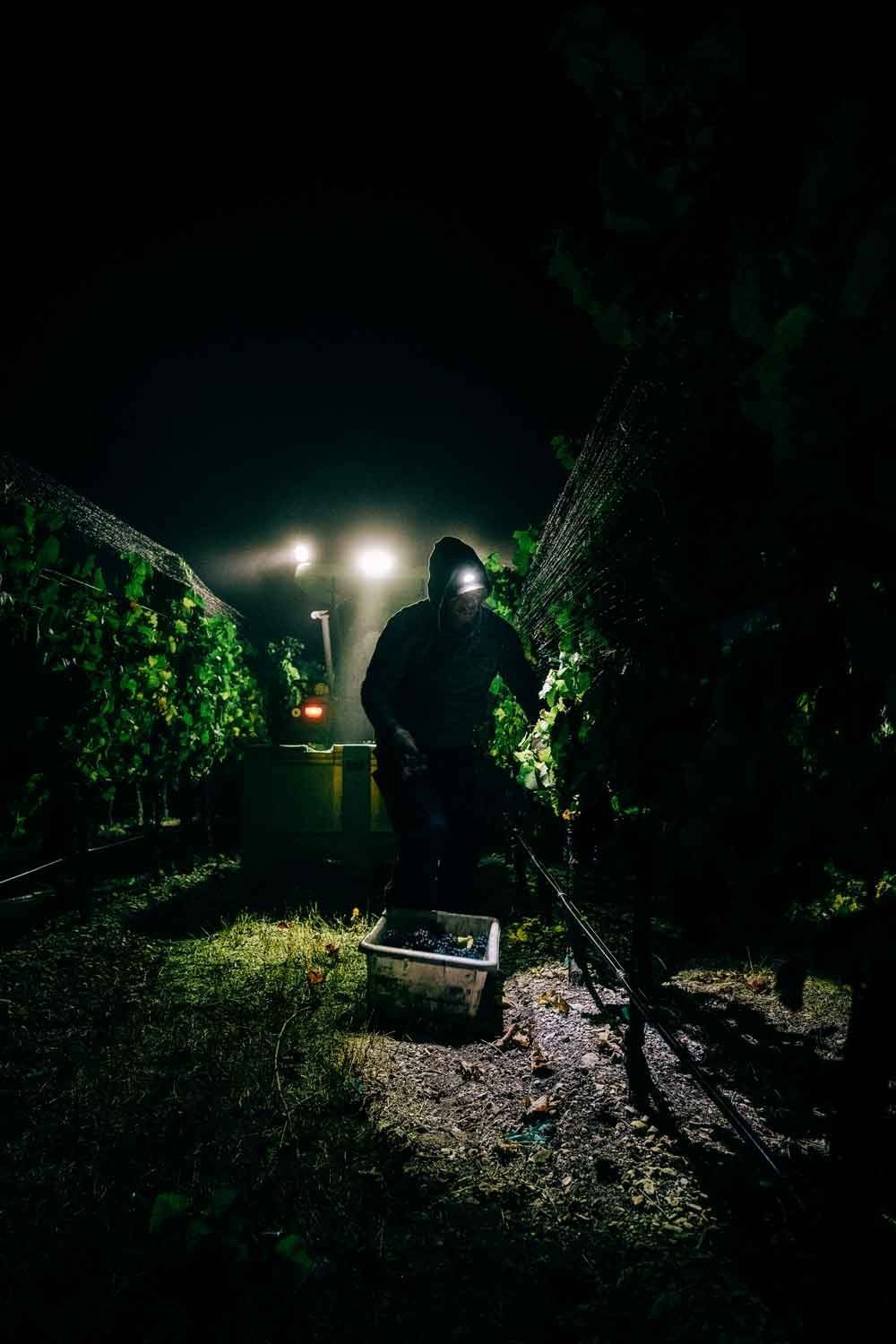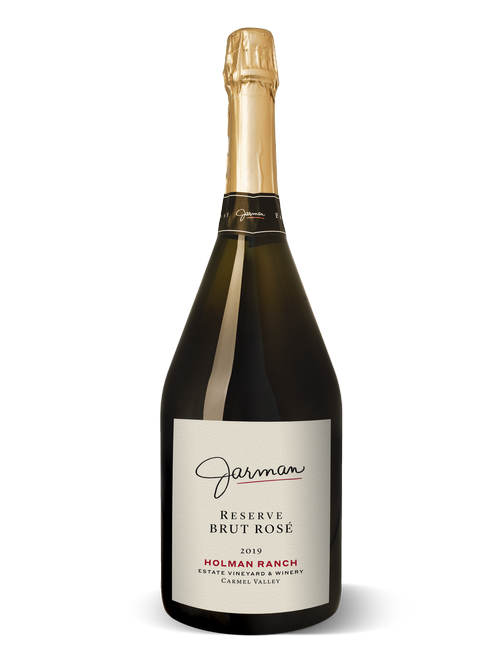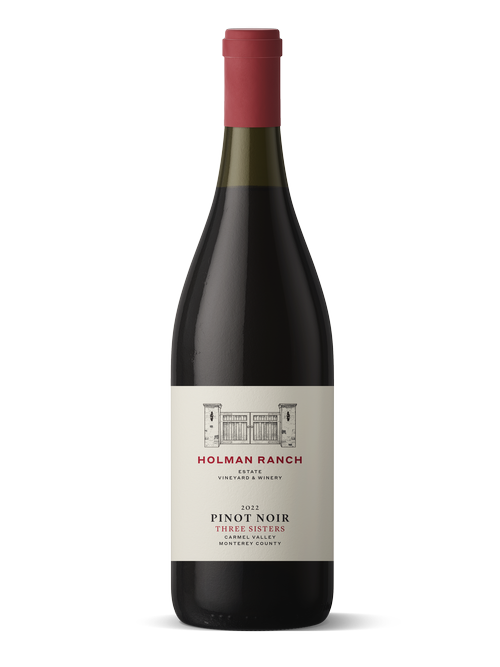Distinct wines year-to-year
We aim to give our wine the freedom to be distinct year-to-year, combining French techniques with holistic agriculture in a state-of-the-art wine cave.
Vintage Notes
2024
The 2024 vintage in Carmel Valley was marked by generally favorable and moderate weather conditions throughout the growing season. The year started with typical winter rainfall, which helped to replenish the soil moisture and set a solid foundation for the vines. Spring and summer were dry, with warm temperatures that allowed for steady vine growth and consistent ripening. Heat was moderate, avoiding any extreme conditions, which helped to set a modest but ample crop. Cooperative and mild weather facilitated even ripening and an on-time harvest. Picking began with Pinot Noir for the Reserve Jarman Sparkling Brut Rosé on August 26th and concluded with the Syrah on October 10th. Overall, agreeable weather patterns contributed to a harvest with vibrant fruit, fresh acidity, and good overall balance. The wines have excellent potential and are progressing very well in the cellar.
2023
The 2023 vintage showed a distinct contrast to that of 2022. Heavy rains continued into the early Spring, refilling reservoirs and ground water, and setting the vineyard up for a strong and healthy year. Bud-break was late, giving the plants a delayed start on the growing season. A prolonged cool period of weather during set proved positive, as the vines were able to develop slowly with above-average yield. Cool Spring weather gave way to a very moderate Summer, delaying the start of harvest to a record pick date of September 13 for Jarman Sparklinng Brut Rosé. Harvest concluded with the Syrah pick on October 30, Holman Ranch’s latest harveset to date. In the cellar, the wines showed great elegance and restraint. The cool ripening season and late harvest have given the whites freshness and vibrancy. The reds show real finesse and depth, and are reminiscent of an old-world style. There is no doubt that they will age slowly and gracefully, revealing increased levels of nuance and complexity as time goes on.
2022
The 2022 vintage tested the fortitude and maturity of the vineyard. The 2021/2022 winter was a classic case of boom and bust as early season torrential rain gave way to a remarkably uneventful midwinter. Moderate late season rains gave hope but ultimately did little to replenish precious groundwater reserves. Bud-break occurred slightly ahead of schedule and the plants progressed through the early growing season and into set without issue. Frigid early season temperatures and turbulence in the weather combined with water stress caused the plants to set a very light crop. The decreased fruit load on the vines led to a very early start to harvest on August 15th, with the picking of the 2022 sparkling wine grapes. In the cellar the wines repaid the efforts by giving fresh and vibrant flavors with just a touch of opulence. The 2022 Holman Ranch wines show the consistency and integrity of a vineyard that was able to thrive in one of the most challenging years yet.
2021
The 2021 vintage has proven to be another cooler growing season with modest yields but exceptional quality. The 2020/2021 winter brought below average rainfall to the Carmel Valley area and overall proved to leave the vineyards with little groundwater supply. Cool, even temperatures, during set allowed for the vines to establish a healthy crop. The season continued with mild temperatures and above average occurrence of fog, allowing for an extended hang-time on the vine. Harvest began with the picking of Pinot Noir and Chardonnay on the 2nd of September and ended with the harvest of the 2021 Estate Syrah on the 9th of October. Overall, quality is very high from the harvest with wines showing similarities to the 2018 and 2019 vintages. The vineyard continues to mature and complex with age and the results are more apparent in each subsequent year.
2019
The growing season began with bud break in early April, a little later than usual. Steady, but cool weather led to flowering and a good set. With modest crop level, the vines were able to progress through veraison with very little irrigation, so ripeness was achieved at the end of September. Wines from this vintage are characterized by full, ripe flavors and concentration. They will drink well now and continue to develop in the bottle over the next 5-7 years.
2018
The 2018 vintage at Holman Ranch was characterized by relatively low yields and exceptionally intense, vibrant fruit. Temperatures stayed relatively cool, while days were long, bright, and sunny. Efforts to minimize irrigation in the vineyard contributed to small, tight clusters with tiny berries, and the clusters were able to reach optimal phenolic ripeness while sugars remained in-balance.
2017
The 2017 vintage was characterized by a wet, stormy winter, which gave much-needed rainfall that replenished the ground water and restored moisture to the soil. A warm spring gave good vine growth and a moderately high set. An unusual ripening period saw several weeks of greatly elevated temperatures, leading to an early harvest, beginning in August and wrapping up by the middle of September. The wines from 2017 are perfumed and fruity with a lightness and elegance on the palate.
2016
The 2016 harvest began with a moderately temperatured spring with cooperative weather, which gave a good set in the vineyard. A decent rain season during the winter helped rejuvenate accessible water supplies for the vineyard. Early on, vines were showing a nice recovery from the previous year of drought, and the vintage showed great promise. The vineyard set nicely, and crop levels returned to just under three tons per acre. Verasion was reached during the first week of July, setting up a vintage slightly earlier than average, but much more standard than the previous year. Unfortunately, just as harvest closed in, adversity struck in the form of the Soberanes Fire. Smoke from the uncontained, uncontrolled wildfire spared only the whites in what otherwise would have likely been an exceptional vintage.
2015
The 2015 vintage proved to be the culmination of five years of California drought. As unusually cool and windy spring led to a prolonged flowering period, and ultimately, an early ripening and low yield. Quality overcame quantity as the 2015 vintage shows exceptional depth and concentration.
2014
The 2014 vintage saw significant yields from the Holman Ranch Vineyard. However, 2014 proved to be high quality, giving balanced, ripe fruit, making it one of the most notable vintages to date under the Holman Ranch label. A good crop was set during a relatively warm and dry spring. Even weather during the ripening period gave a medium-long hang-time and fruit punctuated by clean berry flavors, balanced acidity, and dried spice complexity. The majority of the fruit was harvested during the first week of September.
2013
The 2013 vintage was characterized by a sizable yield. Even with pruning for a modest crop, the vineyard set a prolific number of clusters. A warm, even, dry spring gave the vines perfect conditions to produce well-formed berries and even clusters. Timing of harvest was spot-on, in comparison with previous years with the bulk of the fruit coming in during the 1st and 2nd week of September. The 2013 wines are bright, clear expressions of Carmel Valley terroir.
2012
The 2012 vintage was characterized by a slight stylistic change in winemaking. To make Pinot Noir with notably lower alcohol content, the pick date was moved forward. A cool ripening period gave lean, complex wines with substantial acidity. The 2012 vintage produced very age-worthy wines.

